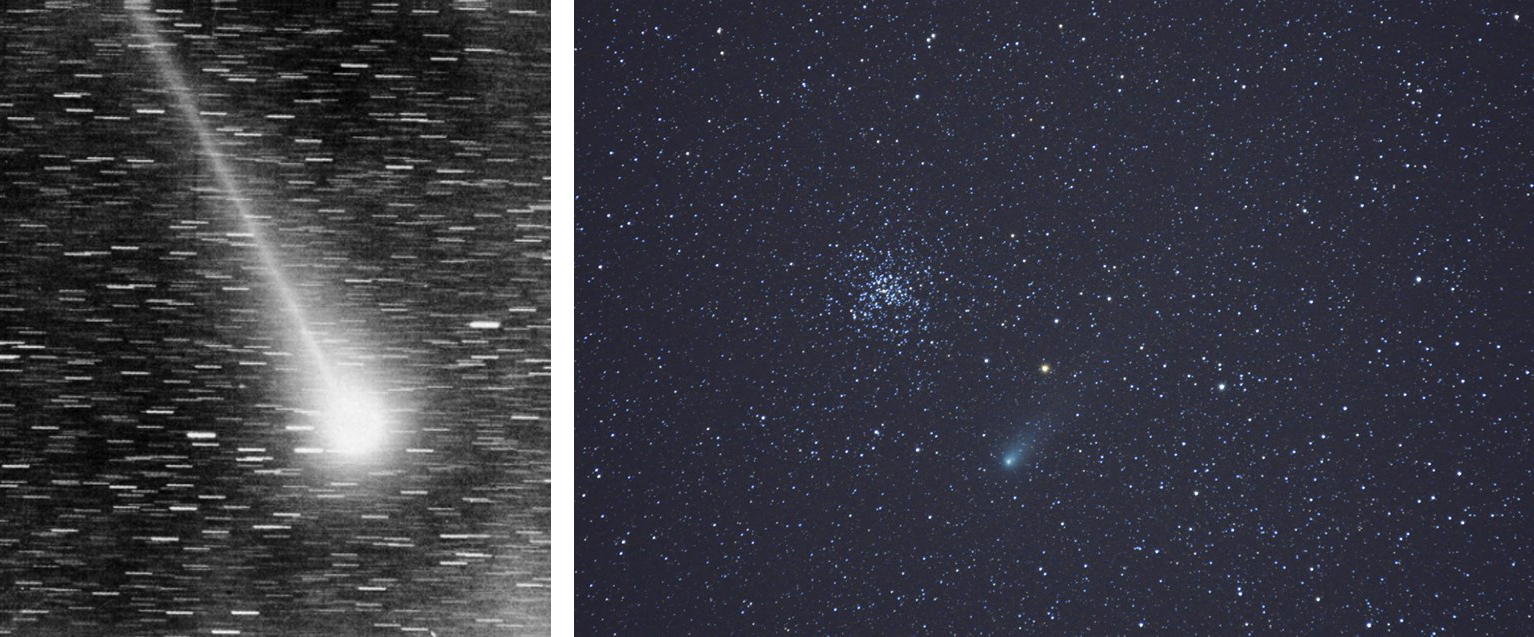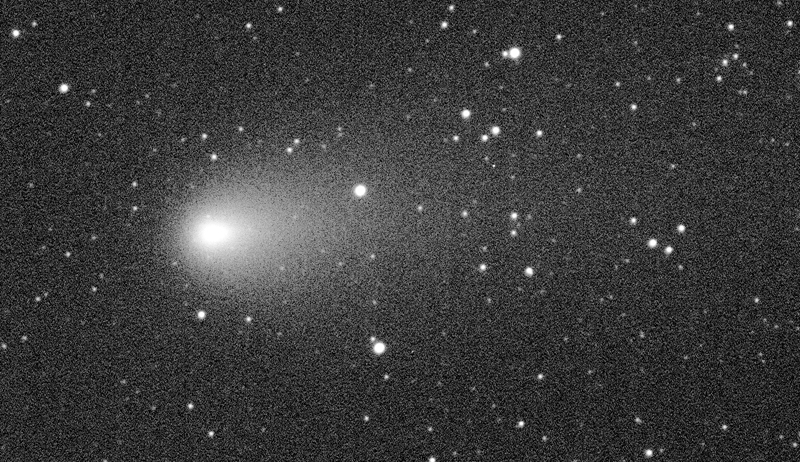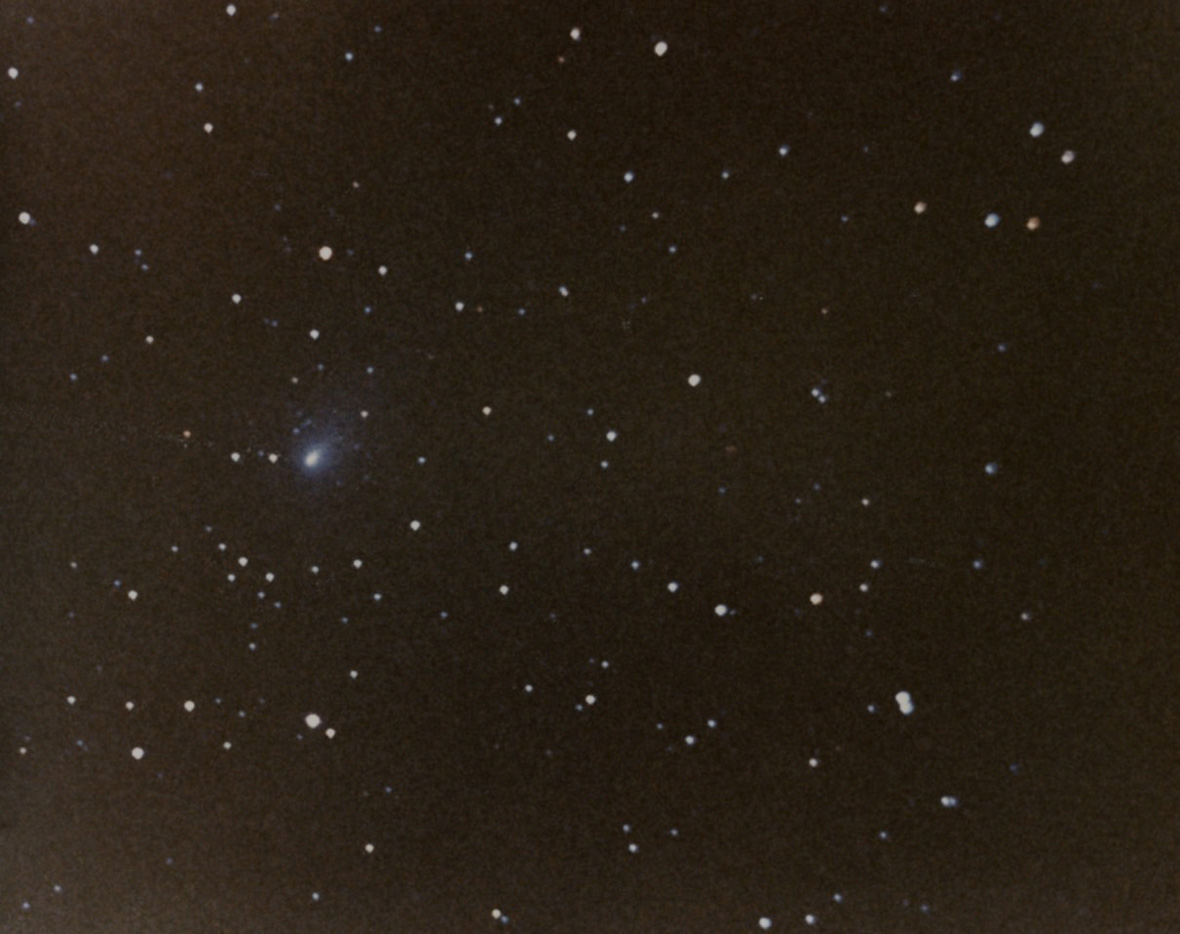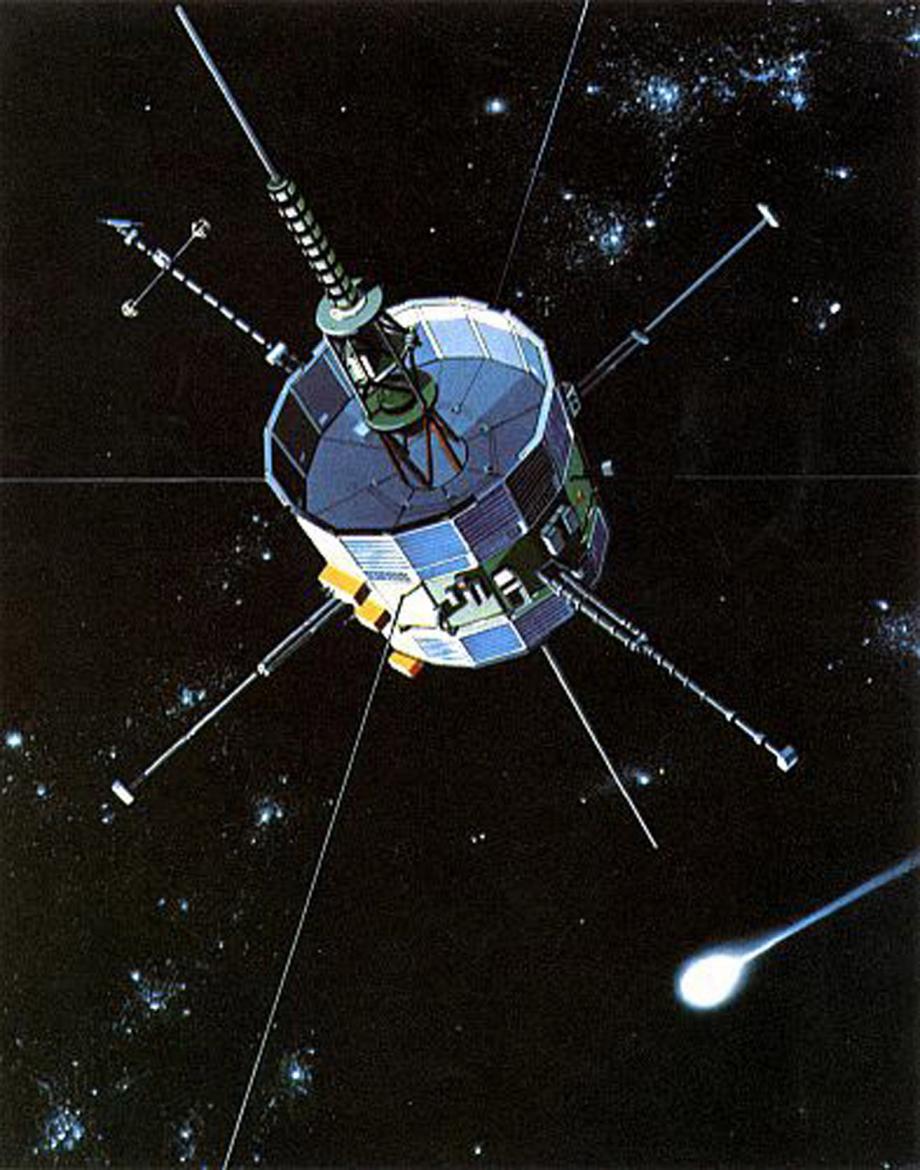
Perihelion: 1985 September 5.21, q = 1.028 AU
The last comet discovered in the 19th Century was found on December 20, 1900, by the French astronomer Michel Giacobini from Nice Observatory, the fifth of twelve comets he discovered between 1896 and 1907. The comet was around 10th magnitude and was followed for two months, with orbital calculations showing it to be a periodic object with an orbital period somewhat less than seven years. It was unfavorably placed for viewing in 1907 and wasn’t recovered, and was likewise expected to be unfavorably placed in 1914, however on October 23, 1913, the German astronomer Ernst Zinner – who would later become a renowned science historian – accidentally rediscovered it while examining variable stars. The revised orbital calculations indicated that it has an orbital period close to 6.6 years, and it has been recovered on almost every return since that time.
Comet Giacobini-Zinner is, intrinsically, one of the brighter Jupiter-family periodic comets, and with a perihelion distance close to 1 AU it can pass close to Earth on occasion and become somewhat bright. In 1946 it passed 0.26 AU from Earth and, following a small outburst, briefly reached naked-eye visibility at 6th magnitude. It had other favorable returns in 1959, 1985, and 2018 and reached 7th magnitude during each of those.

The comet’s descending node is very close to Earth’s orbit, and Comet Giacobini-Zinner is the parent comet of the Draconid meteor shower, that peaks around October 8-9 each year. Normally the shower is quite weak, however, in 1933 a strong Draconid “storm” was witnessed from Europe when rates momentarily reached somewhere between 3000 and 30,000 meteors per hour. A similar Draconid “storm” occurred in 1946, when despite a full moon and widespread cloudy weather several locations within the U.S. recorded rates as high as 3000 to 6000 meteors per hour. This shower, incidentally, marks the first time that meteors were observed via radar; a meteor passing through the atmosphere ionizes molecules in the air around it, and these ions leave a radar-detectable echo. Several World War II-era radars were specially adapted for use in detecting meteors from this Draconid shower and were successful in recording them.
Gravitational perturbations from Jupiter have changed the comet’s orbit enough such that the Draconid meteor stream no longer passes so close to Earth, and thus we no longer experience Draconid “storms” like these. Observers in Japan recorded a brief Draconid shower with a peak rate of about 200 meteors per hour in 1985, and a weaker shower with rates between 50 and 100 meteors per hour was recorded from Japan and parts of eastern Europe in 1998. During the comet’s most recent return in 2018 several observers, including within the U.S., observed a Draconid shower lasting a couple of hours with a peak rate of slightly over 100 meteors per hour.

Comet Giacobini-Zinner achieved a new claim to fame during its favorable return in 1985. Comet scientists in the U.S. were dismayed by the failure of the U.S. Congress to fund a spacecraft mission to Comet 1P/Halley (then en route to its 1986 perihelion passage), but planetary scientist Robert Farquhar at NASA’s Goddard Space Flight Center in Maryland proposed an alternate idea: utilizing the already-existing International Sun-Earth Explorer 3 (ISEE-3) spacecraft, launched in 1978 and presently located at the sun-Earth L1 Lagrangian point 1.6 million km directly sunward of Earth, and send it on a series of lunar flybys that would propel it towards Giacobini-Zinner. The idea was approved, and following the final lunar flyby – only 120 km above the lunar surface – on December 22, 1983, the spacecraft was renamed the International Cometary Explorer (ICE). This entire mission is discussed more thoroughly in a previous “Special Topics” presentation.
On September 11, 1985, ICE passed through Giacobini-Zinner’s ion tail some 7700 km “downwind” from the nucleus, becoming the first spacecraft mission to encounter a comet. ICE did not carry any cameras but did carry several scientific instruments that were able to record measurements of the electrical environment around the comet and of its interaction with the solar wind. Among its findings were that the comet’s magnetic field reversed polarity directly at the ion tail – fulfilling a prediction made in the late 1950s by the Swedish physicist Hannes Alfven – along with a thick “bow wave” 130,000 km sunward of the nucleus (produced by the solar wind encountering charged particles within the comet’s environment) and a large proportion of ionized water molecules – consistent with the “dirty snowball” model of a comet’s nucleus proposed in 1950 by Fred Whipple (and the subject of a previous “Special Topics” presentation). The goings-on within a comet’s ion tail are discussed more thoroughly in next week’s “Special Topics” presentation.

Comet Giacobini-Zinner’s most recent return, in 2018 – during which it passed perihelion on September 10 and passed 0.39 AU from Earth – turns out to be the most favorable return of the entire 21st Century. An approach to Jupiter of 0.36 AU in early 2029 increases the perihelion distance and orbital period to 1.07 AU and 6.7 years, respectively, although a somewhat closer approach to Jupiter in 2076 will drop the perihelion distance back down to near its present value. The return in 2031, with a perihelion passage on August 30 and a closest approach to Earth of 0.55 AU, is quite favorable, and the comet should reach a peak brightness between 8th and 9th magnitude.
More from Week 38:
This Week in History Special Topic Free PDF Download Glossary
Ice and Stone 2020 Home Page


